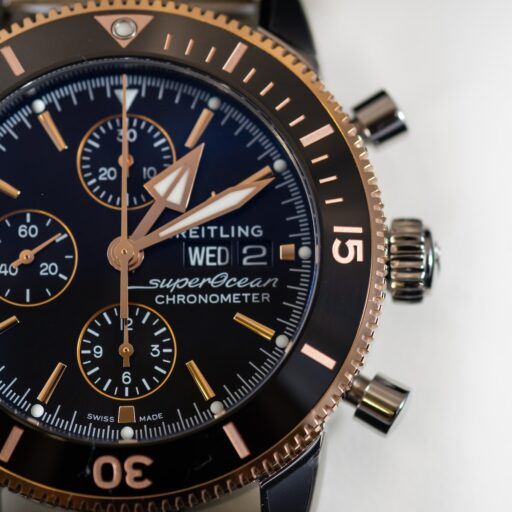Support our educational content for free when you purchase through links on our site. Learn more
How the Quartz Crisis Shook Watchmaking Forever ⌚ (2025)
Imagine waking up one day to find that the centuries-old art of mechanical watchmaking was on the brink of extinction—replaced almost overnight by tiny quartz crystals and digital displays. That’s exactly what happened during the Quartz Crisis, a seismic event in the 1970s and 80s that nearly wiped out the Swiss watch industry and reshaped global timekeeping forever. But how did this technological revolution unfold, and what lasting impact did it have on traditional watchmaking?
In this deep dive, we unravel the fascinating story behind the quartz revolution, the near-collapse of Swiss watchmakers, and the bold innovations that saved the industry. From the birth of the iconic Swatch to the luxury renaissance of mechanical watches, we’ll explore every twist and turn of this dramatic chapter. Plus, we’ll reveal five key consequences that still influence your watch choices today. Ready to discover how a tiny crystal changed the world of watches? Let’s tick forward!
Key Takeaways
- Quartz technology introduced unprecedented accuracy and affordability, disrupting traditional mechanical watchmaking.
- The Swiss watch industry faced massive job losses and brand closures but rebounded through consolidation and innovation.
- Japanese brands like Seiko, Citizen, and Casio dominated the quartz market, reshaping global watch dynamics.
- Mechanical watches evolved into luxury collectibles, emphasizing craftsmanship and heritage.
- The Swatch watch played a pivotal role in reviving Swiss watchmaking with its colorful, affordable design.
If you’re curious about exploring quartz or mechanical watches that blend tradition with innovation, check out these categories:
- 👉 Shop Seiko Watches: Amazon | Seiko Official Website
- Explore Swiss Luxury Watches: Luxury Watch Brands
- Affordable Quartz Watches: Affordable Watches
Dive in and discover how the Quartz Crisis still shapes every tick on your wrist!
Table of Contents
- ⚡️ Quick Tips and Facts About the Quartz Crisis
- ⏳ The Quartz Revolution: How Quartz Technology Shook the Watch Industry
- 🔍 What Sparked the Quartz Crisis? Origins and Early Developments
- 💥 The Impact on Traditional Watchmaking: Swiss Watch Industry in Turmoil
- 1️⃣ Five Key Consequences of the Quartz Crisis on Watch Brands
- ⌚ How Mechanical Watchmakers Survived and Thrived Post-Crisis
- 🛠️ Innovation and Adaptation: The Watch Industry’s Response to Quartz
- 🌍 Global Watch Market Shifts: Japan’s Rise and Switzerland’s Recovery
- 💡 Lessons Learned: What the Quartz Crisis Teaches Modern Watch Enthusiasts
- 🔮 The Quartz Crisis Legacy: How It Shapes Today’s Watch Industry
- 🎯 Conclusion: The Quartz Crisis—Catastrophe or Catalyst?
- 🔗 Recommended Links for Deep Dives on Quartz and Watch History
- ❓ Frequently Asked Questions About the Quartz Crisis
- 📚 Reference Links and Sources for Further Reading
⚡️ Quick Tips and Facts About the Quartz Crisis
Welcome to the wild ride that was the Quartz Crisis—a seismic event that shook the watch world to its core! At Watch Brands™, we’ve seen how this era reshaped the industry, and here are some quick nuggets to get you ticking:
- ✅ Quartz watches introduced in the late 1960s offered unmatched accuracy and affordability compared to mechanical watches.
- ❌ The Swiss watch industry, long the global leader, lost over two-thirds of its workforce between 1970 and 1988.
- ✅ Japanese brands like Seiko, Citizen, and Casio surged ahead by embracing quartz technology early.
- ✅ The Swatch Group emerged from the ashes of Swiss consolidation, reviving mechanical watchmaking with a fresh strategy.
- ✅ Mechanical watches transitioned from everyday tools to luxury collectibles, prized for craftsmanship and heritage.
- ❓ Curious how a plastic watch saved the Swiss industry? Keep reading!
For a deeper dive into the history of watches, check out our comprehensive history of watches.
⏳ The Quartz Revolution: How Quartz Technology Shook the Watch Industry
The story begins with a tiny crystal that changed everything: the quartz oscillator. Unlike traditional mechanical escapements, quartz watches use the piezoelectric effect to keep time with astonishing precision.
The Seiko Astron: The Game Changer
In December 1969, Seiko launched the Astron, the world’s first quartz wristwatch. This innovation was a game-changer:
- Accuracy: ±5 seconds per month, far superior to mechanical watches.
- Cost: Initially expensive but rapidly became affordable.
- Impact: Sparked a global shift toward quartz technology.
Seiko’s bold move to make quartz patents public accelerated adoption worldwide, democratizing precise timekeeping.
Quartz vs. Mechanical: The Accuracy Battle
| Feature | Mechanical Watch | Quartz Watch |
|---|---|---|
| Accuracy | ±5 to 15 seconds per day | ±5 seconds per month |
| Maintenance | Regular servicing required | Battery replacement only |
| Complexity | Hundreds of moving parts | Few electronic components |
| Price Range | Wide, often higher | Generally lower |
| Aesthetic Appeal | Traditional craftsmanship | Modern, sleek designs |
The quartz revolution was not just about technology but also about changing consumer expectations. Suddenly, watches were cheaper, more reliable, and easier to maintain.
🔍 What Sparked the Quartz Crisis? Origins and Early Developments
The Quartz Crisis wasn’t a sudden event but a perfect storm of innovation, market shifts, and industry inertia.
Swiss Industry’s Initial Hesitation
The Swiss watch industry, deeply rooted in mechanical watchmaking tradition, was slow to embrace quartz technology. This hesitation was partly due to:
- National pride and identity tied to mechanical craftsmanship.
- Fear of cannibalizing their own market.
- Underestimating Japanese competitors’ technological advances.
Meanwhile, Japanese companies seized the opportunity, investing heavily in quartz tech and mass production.
The Digital Watch Explosion
The early 1970s also saw the rise of digital watches, with Hamilton’s Pulsar (1970) leading the way. Though expensive and somewhat gimmicky, digital watches hinted at the future of timekeeping.
By the late 1970s, quartz watches dominated global sales, with Japan producing millions annually. The Swiss market share plummeted from 50% to below 20%.
💥 The Impact on Traditional Watchmaking: Swiss Watch Industry in Turmoil
The Swiss watch industry faced near collapse. Between 1970 and 1983:
- The number of Swiss watchmakers dropped from 1,600 to 600.
- Employment fell from 90,000 to 28,000.
- Many iconic brands went bankrupt or were forced to merge.
The Human Side: Stories from the Frontline
Our Watch Brands™ team recalls stories from Swiss watchmakers who lived through this era:
“I remember my grandfather telling me how entire workshops shut down overnight. The pride in mechanical watches was immense, but quartz was a tidal wave no one could stop.”
This crisis forced a rethink of strategy and industry consolidation, leading to the birth of the Swatch Group.
1️⃣ Five Key Consequences of the Quartz Crisis on Watch Brands
Let’s break down the five major impacts the Quartz Crisis had on watch brands worldwide:
| # | Consequence | Description |
|---|---|---|
| 1 | Industry Consolidation | Mergers like ASUAG and SSIH formed SMH (later Swatch Group), rescuing Swiss watchmaking. |
| 2 | Shift to Quartz Production | Brands embraced quartz to stay competitive or faced extinction. |
| 3 | Rise of Japanese Dominance | Seiko, Citizen, and Casio became global leaders in affordable, reliable quartz watches. |
| 4 | Luxury Mechanical Renaissance | Mechanical watches repositioned as luxury items with high craftsmanship and exclusivity. |
| 5 | Innovation in Marketing | Swatch introduced colorful, affordable, fashion-forward watches to reclaim market share. |
This table sums up the seismic shifts that reshaped the industry’s landscape.
⌚ How Mechanical Watchmakers Survived and Thrived Post-Crisis
Despite the quartz onslaught, mechanical watchmaking didn’t just survive—it thrived in a new form.
The Luxury Pivot
Brands like Omega, Patek Philippe, and Rolex doubled down on mechanical excellence, emphasizing:
- Heritage and tradition.
- Handcrafted movements.
- Limited editions and exclusivity.
This repositioning transformed mechanical watches into status symbols and collectors’ treasures.
The Swatch Strategy: Affordable Meets Fashion
The Swatch Group’s introduction of the Swatch watch in 1983 was a masterstroke:
- Simple, colorful plastic watches with fewer parts.
- Affordable, disposable, and fashionable.
- Reclaimed the entry-level market from quartz digital competitors.
This dual approach—luxury mechanical and fun quartz—saved Swiss watchmaking.
🛠️ Innovation and Adaptation: The Watch Industry’s Response to Quartz
The crisis spurred technological and marketing innovations:
- ETA movements standardized quartz and mechanical calibers across brands, reducing costs.
- Smart quartz watches added features like alarms, calendars, and chronographs.
- Global manufacturing shifted, with parts made in Asia and assembly in Switzerland.
- Marketing evolved to emphasize lifestyle and fashion, not just timekeeping.
Seiko’s pioneering of multifunction quartz watches and Casio’s G-Shock line showed how innovation could thrive post-crisis.
🌍 Global Watch Market Shifts: Japan’s Rise and Switzerland’s Recovery
Japan’s watch industry exploded during the 1970s and 80s:
- By 1979, quartz watches made up 55% of Japan’s 60 million watch production.
- Brands like Seiko became household names worldwide.
Meanwhile, Switzerland’s recovery was slow but strategic:
- Merging companies into SMH/Swatch Group.
- Focusing on high-end mechanical watches and the Swatch brand for mass market.
- Leveraging currency advantages post-Plaza Accord (1985).
This global shift redefined watchmaking power dynamics.
💡 Lessons Learned: What the Quartz Crisis Teaches Modern Watch Enthusiasts
What can we, as watch lovers, take away from this turbulent chapter?
- Innovation is unstoppable—embrace new tech but respect tradition.
- Diversification is key—brands that balanced quartz and mechanical survived.
- Marketing matters—the Swatch success story shows how branding can revive an industry.
- Mechanical watches are art—their value lies beyond timekeeping, in craftsmanship and heritage.
If you’re curious about buying watches that blend tradition and innovation, explore our Guide to Buying Watches.
🔮 The Quartz Crisis Legacy: How It Shapes Today’s Watch Industry
The Quartz Crisis left a lasting legacy:
- Swiss dominance restored but with a new business model.
- Quartz remains popular in affordable and smartwatches.
- Mechanical watches are luxury icons, commanding premium prices.
- Smartwatches now pose a new challenge, echoing quartz’s disruption.
For a fascinating visual and narrative summary, don’t miss the excellent video “The Quartz Crisis: The (Almost) End of the Watch Industry” by Sideprojects, linked in our featured video section.
🎯 Conclusion: The Quartz Crisis—Catastrophe or Catalyst?
The Quartz Crisis was undoubtedly one of the most dramatic upheavals in watchmaking history. It nearly obliterated the traditional Swiss watch industry, forcing brands to either adapt or perish. But as we’ve explored, it also sparked innovation, consolidation, and a renaissance that ultimately reshaped the industry into what we know today.
From the devastating loss of thousands of jobs and iconic brands to the birth of the Swatch Group and the resurgence of mechanical watches as luxury items, the crisis was both a catastrophe and a catalyst. The Swiss watch industry’s initial hesitation gave way to strategic brilliance—embracing quartz where needed, while elevating mechanical watches to artful luxury.
And what about that plastic Swatch watch that saved the day? It was a bold gamble—a fun, affordable, and fashion-forward answer to the quartz invasion that helped the Swiss reclaim their market share. It’s a reminder that sometimes, disruption demands reinvention.
For watch enthusiasts today, the Quartz Crisis teaches us to appreciate both precision technology and timeless craftsmanship. Whether you’re drawn to quartz’s reliability or mechanical watches’ artistry, understanding this history enriches your appreciation of every tick and tock.
🔗 Recommended Links for Deep Dives on Quartz and Watch History
Ready to explore or shop some legendary watches and learn more? Here are some top picks and resources:
- 👉 Shop Seiko Watches on:
Amazon | Seiko Official Website - 👉 Shop Citizen Watches on:
Amazon | Citizen Official Website - 👉 Shop Casio Watches on:
Amazon | Casio Official Website - 👉 Shop Swatch Watches on:
Amazon | Swatch Official Website - Recommended Books:
❓ Frequently Asked Questions About the Quartz Crisis
What caused the quartz crisis in the watch industry?
The Quartz Crisis was caused by the introduction and rapid adoption of quartz watch technology in the late 1960s and 1970s. Quartz watches, pioneered by Seiko’s Astron in 1969, offered superior accuracy, lower production costs, and affordability compared to traditional mechanical watches. This technological leap, combined with Japanese manufacturers’ aggressive mass production and marketing, disrupted the Swiss-dominated mechanical watch industry, which was slow to adapt.
How did traditional Swiss watchmakers respond to the quartz crisis?
Initially, many Swiss watchmakers were reluctant to embrace quartz technology, clinging to their mechanical heritage. However, as the crisis deepened, they responded by:
- Consolidating companies (e.g., ASUAG and SSIH merging into SMH, later Swatch Group).
- Developing the Swatch watch, a colorful, affordable quartz watch designed to reclaim the entry-level market.
- Refocusing on luxury mechanical watches emphasizing craftsmanship, heritage, and exclusivity.
- Streamlining manufacturing through ETA movements to reduce costs and improve efficiency.
This multi-pronged strategy allowed the Swiss industry to survive and eventually thrive again.
What was the impact of quartz technology on mechanical watch sales?
Quartz technology caused a dramatic decline in mechanical watch sales during the 1970s and early 1980s. Mechanical watches, once the dominant timekeepers, were seen as less accurate, more expensive, and higher maintenance compared to quartz watches. This led to:
- A massive drop in mechanical watch production and sales.
- Closure or bankruptcy of many mechanical watch manufacturers.
- A repositioning of mechanical watches as luxury or collector’s items rather than everyday tools.
How did the quartz crisis change watch manufacturing globally?
The crisis triggered a global restructuring of watch manufacturing:
- Japanese companies like Seiko, Citizen, and Casio became dominant producers of quartz watches.
- Swiss manufacturers consolidated and centralized movement production (e.g., ETA supplying movements to multiple brands).
- Production shifted globally, with parts manufactured in Asia and assembly often in Switzerland.
- The industry diversified product lines to include both quartz and mechanical watches, as well as fashion-forward models like Swatch.
Which watch brands survived the quartz crisis and how?
Brands that survived did so by adapting quickly or leveraging their heritage:
- Seiko, Citizen, and Casio thrived by embracing quartz technology early and innovating.
- Swiss brands like Omega, Longines, and Tissot survived through consolidation and later focusing on luxury mechanical watches.
- The Swatch Group emerged as a powerhouse by merging struggling brands and launching the Swatch watch.
- Luxury houses like Patek Philippe and Rolex survived by emphasizing exclusivity and craftsmanship.
What lessons did the watch industry learn from the quartz crisis?
Key lessons include:
- Innovation cannot be ignored; embracing new technology is vital.
- Diversification of product lines helps brands weather market disruptions.
- Marketing and branding are as important as technology.
- Mechanical watches have enduring value as luxury and heritage items.
- Strategic consolidation can save an industry on the brink.
How has the quartz crisis influenced modern watch design and innovation?
The Quartz Crisis pushed watchmakers to:
- Develop hybrid watches combining quartz accuracy with mechanical aesthetics.
- Innovate in materials and manufacturing processes to reduce costs and improve durability.
- Emphasize design and brand storytelling to differentiate in a crowded market.
- Prepare for new disruptions, such as smartwatches, by learning from past upheavals.
Reference Links and Sources for Further Reading
- Quartz Crisis – Wikipedia
- Seiko Museum: Quartz Crisis and Swiss Watch Industry
- Digital Dust: What happened to the digital watch? | Epochs Menswear
- Swatch Official Website
- Seiko Official Website
- Citizen Official Website
- Casio Official Website
- Omega Official Website
- Rolex Official Website





